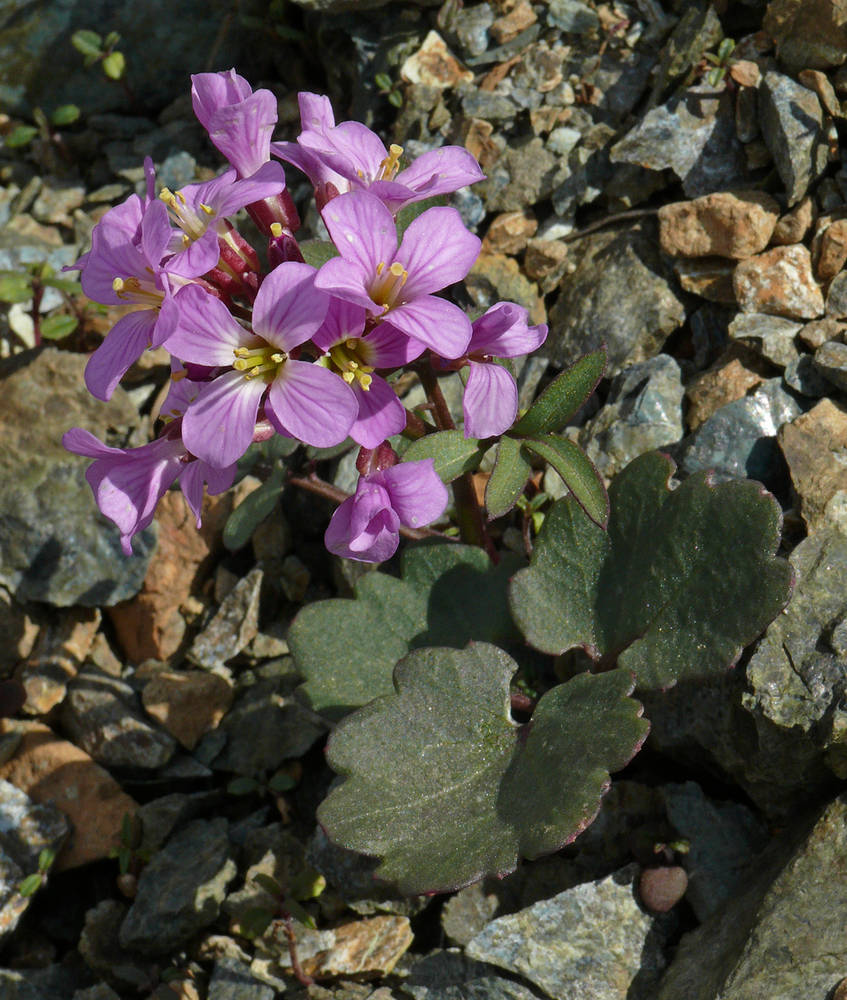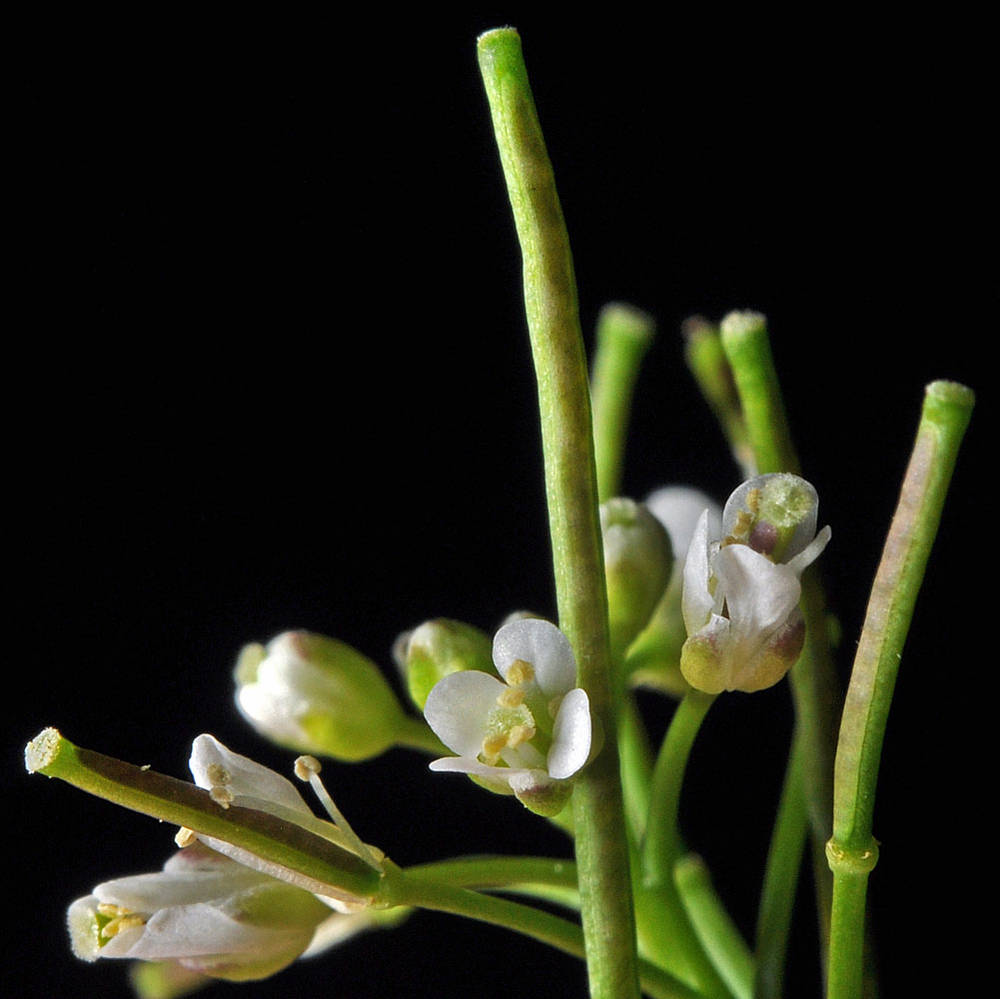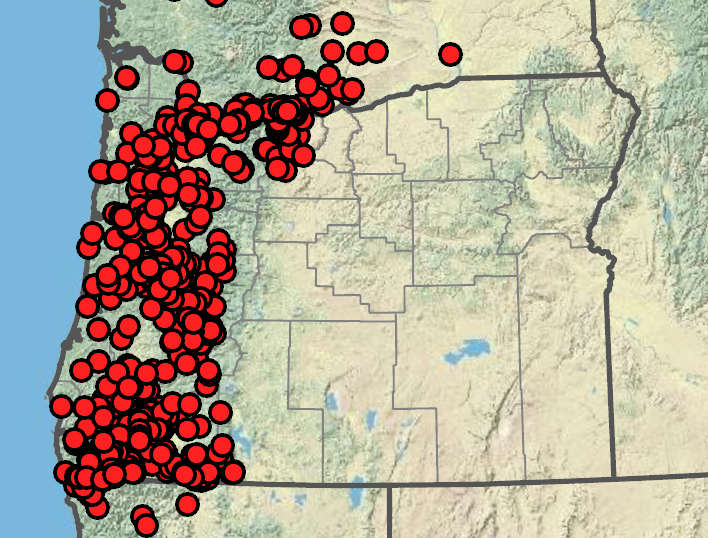Cardamine nuttallii
Cardamine pensylvanica
Nuttall's toothwort, slender toothwort
Pennsylvania bittercress, Quaker bittercress
erect, 0.5–2(3) dm; simple, bases above ground much wider than attachment to rhizome.
(5)15–55(70) cm, glabrous above.
withered by anthesis, not rosulate, 4–15 cm.
simple or 3(5)-foliolate; (3)4–20(25) cm;
blades or terminal leaflets reniform, suborbicular; ovate, or oblong; (0.9)1.3–4(5.2) × (0.8)1.2–5(7) cm, often with purple spots, bases cordate to obtuse;
margins apiculate-dentate or 5–7-lobed.
1–3, pinnately or palmately compound, 3(5)-foliolate, bases not auriculate;
terminal leaflets ovate, oblong, or linear; (0.5)1–3.5(6) cm;
lateral leaflets smaller; entire, dentate, or lobed.
(3)5–20(35), pinnately (5)7–13(19)-foliolate, sometimes pinnatisect; middle leaves 2–11 cm, bases not auriculate, often sparsely hirsute;
lateral leaflets orbicular; ovate, elliptic, or oblong, 4–25 mm wide;
terminal leaflets suborbicular, obovate, oblanceolate, or elliptic, 1.3–3(4) × 0.6–2.5 cm;
margins entire to repand or obscurely 3–5-lobed, subsessile or with petiolule to 10 mm; uppermost leaves narrower and with fewer lobes or leaflets.
bracts 0, fruiting pedicels ascending to divaricate, 1–3.5 cm.
bracts 0, fruiting pedicels divaricate to ascending; (3)4–10(13) mm.
sepals erect, oblong, 3.5–5 mm;
lateral pair saccate;
petals obovate, 10–15 × 4–7.5 mm, purple to pale pink, rarely white, not clawed;
tips rounded;
ovules 8–16 per ovary;
styles 4–8 mm.
sepals oblong; (1)1.3–2.3 mm;
petals spatulate to oblanceolate, 2–3.5(4) × 0.8–1.5 mm, white, not clawed;
stamens 6;
ovules 40–80 per ovary;
styles 0.5–1 mm.
25–56 × 2–2.3 mm, glabrous.
(14)17–27(32) × 0.8–1.1 mm, glabrous.
oblong, 2–2.5 × 1.4–1.6 mm.
oblong to ovate, 0.7–1.1 × 0.5–0.8 mm.
=32, 64.
Cardamine nuttallii
Cardamine pensylvanica
Damp woods, shaded bottomlands and hillsides, mossy slopes, streamsides. Flowering Mar–Jul. 0–2000 m. Casc, Col, CR, ECas, Est, Sisk, WV. CA, WA; north to British Columbia. Native.
Marshes, streams, swamps, seepage, lake margins, ditches, waste ground. Flowering Apr–Jun. 0–2100 m. BW, Casc, Col, CR, ECas, Sisk, WV. CA, ID, NV, WA; throughout most of Canada and US. Native.
Ihsan Al-Shehbaz
Ihsan Al-Shehbaz
- Local floras:
BC,
CA,
OR,
WA
- Local Web sites:
CalFlora,
CalPhotos,
Flora NW,
PNW Herbaria
WildflowerSearch
iNaturalist (observations)
USDA Plants Database
- LBJ Wildflower Center
- SEINet
- Plants of the World Online
- Encyclopedia of Life
- Wikipedia
- Google Image Search
- Local floras:
BC,
CA,
OR,
WA
- Local Web sites:
CalFlora,
CalPhotos,
Flora NW,
PNW Herbaria
WildflowerSearch
iNaturalist (observations)
USDA Plants Database
- LBJ Wildflower Center
- SEINet
- Plants of the World Online
- Encyclopedia of Life
- Wikipedia
- Google Image Search





